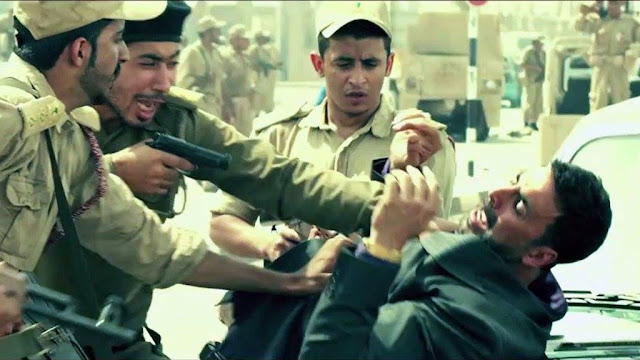Raul ventures into Bollywood for a review of the new release, Airlift.
“170,000 refugees. 488 flights.
59 days. 1 man” [1] .
The tagline should also include that this is essentially five
music videos in a serious film that deals with the Iraq-Kuwait war – a conflict
that resulted in many deaths and alleged human rights violations, and hundreds
of thousands of people fleeing their country including the roughly 170,000 in
this story that were airlifted to India after crossing the border into Jordan. One
wouldn’t include unnecessary musical numbers into films like Schindler’s List, Argo, or Saving Private Ryan.
It completely changes the dramatic tone of the movie, losing the viewer. This
is the problem with the broken Bollywood motion picture industry; although it
could simply be that these just aren’t meant for Western audiences.
 |
| Check out my sexy flute. |
Traditional Hindi movies normally stick to a rigid formula
known as the masala film, which typically combines “comedy, drama, romance, and
action, along with a requisite number of song sequences” [2] .
The song-and-dance numbers and shift in mood may seem unnatural to the Western
viewers, but Indian cinema viewers go in expecting multiple experiences resulting
in a fulfilling whole [2] .
For being one of the largest global producers of cinema and selling almost four
times the number of tickets that Hollywood does, you would think that Bollywood
would be open to pleasing its global audience [3] .
This is not a bad film. The fact that it could have been a
great one is the issue. Every time that I was being sucked into this gripping
and emotional tale, there would be music and possibly dancing. Combining a
story about war and violence with the elements of a musical is not like cake
and ice cream, they just don’t mix. The filmmakers don’t shy away from the
violence and horrors of war, and although it may have been dialed down just a
little, there is death and it’s in your face. So how can you justify mixing
this kind of violence based upon true events with long and drawn out musical
numbers, and songs that screw with the overall tone?
Raja Menon has shown that he is a competent director. He
provides us with beautiful and grand large scale visuals of Kuwait and the
desert, using a mix of helicopter and crane shots. The score and editing are outstanding;
they help create and drive the tension level – at least, when nobody is
breaking out into a song. The script is good, although there were times when I
felt there was too much unnecessary dialogue.
 |
| You've crossed Trump's wall one too many times. It's dying time for you. |
The story mainly focuses on two characters, Ranjit (Akshay
Kumar) and Amrita Katyal (Nimrat Kaur). Kumar is excellent as the archetypal
Schindler-like character, callous and arrogant until he changes to help people.
It felt like he pushed himself as an actor to deliver a high-quality performance.
Kaur is also superb as his wife, who can’t quite understand the transformation
in his character. Her character has the one memorable speech in this.
This is a fine picture that missed the mark being on the
same level with Argo or Schindler’s List. The reason it ends up
not reaching that level is because Bollywood chose to stick to its typical
song-and-dance formula. An Indian viewer might rate this an 8, but I have to
give it a 6 because of the damaging shifts in the atmosphere throughout the
movie.
Score
-Raul Vantassle
Works Cited
|
[1]
|
"IMDB,"
IMDB, 21 4 2016. [Online]. Available: http://www.imdb.com/title/tt4387040/?ref_=nv_sr_1.
[Accessed 21 4 2016].
|
|
[2]
|
b. K. Grant,
Schirmer Encyclopedia of Film, New York: Thomson Gale.
|
|
[3]
|
J. &. P. P.
Matusitz, "The Bollywood in Indian and American Perceptions: A
Comparative Analysis.," India Quarterly: A Journal of International
Affairs, pp. 65-77, 2011.
|


